Did you know that 66% of consumers start their product searches on Amazon?
With vast products and millions of Amazon sellers, it’s no wonder that Amazon is the king of the hill for many eCommerce businesses.
It is the second-largest online retailer worldwide and has almost 2.5 billion monthly active users.
But writing product descriptions and reviews that stand out on Amazon can be daunting and challenging.
You need to do a lot of research to find quality content that will work for you as a seller while satisfying the customer's needs and sparking their interest in buying.
But don’t worry, we’re here to help.
This article will go through the 6 best tips and techniques on how to write product descriptions for Amazon that instantly boost your sales and conversions.
Let's start!
What Makes a Good Product Description on Amazon
Amazon sells hundreds of thousands of different products for many industries.
Some of these products are sold by amateurs who don't have much business experience, while others are well-known brands you may already know about.
So how to make my products unique and not just another knockoff?
- Consider what Amazon wants you to sell — This can vary from seller to seller, so it is essential to understand your specialty.
- Get to know your buyer persona — How does that customer behave? What kind of content do they like? What content do they not want? How can your product help them out?
- Figure out the right marketing strategy — Find the most effective strategy for persuading your customers to add your products to their shopping cart immediately.
When designing a perfect product for Amazon buyers, you must go through two critical and simultaneous stages to acquire a customer's purchase order:
1. Engage buyers with the best product titles to draw their full attention.
2. Turn that attention into profit by writing persuasive and attractive product descriptions that sell.
Let's look at how to write the finest Amazon product description.
How To Write Product Descriptions for Amazon
1. Understand The Buyer Persona
Did you know that 44% of B2B marketers now utilize buyer personas as a marketing strategy, with another 86% planning to do so shortly?
Understanding the buyer persona helps you in writing better product descriptions.
It is easier to sell a product if you know the background of the people who will read the description and what they expect from your product.
What is a buyer persona?
A buyer persona is an amalgamation of different data types, like demographics, behavior, preferences, and interests, to identify what needs to be in a product description.
For example, if you are launching a product, you need to collect information about your existing customers and their profile (behavior) to understand how they interact with your products.
A persona helps us empathize with our potential customers.
In the last few years, the number of sellers who have invested their time, energy, and money to create a great product and service has increased dramatically.
Most of these businesses succeed by getting the right product, user target, brand positioning, and messaging.
When crafting your product description utilize buyer persona by asking yourself these questions:
- What is the core problem of the buyer?
- How are they going to solve this problem?
- What are the buyer's needs and pain points?
Then, based on this information, write a detailed and easy-to-understand product description.
Let's say you know that the core problem of the buyer is: "Large bags are not convenient. I want to find a small purse to fit only my phone and credit cards."
Write about the features that will help the buyer solve their problem with your product.
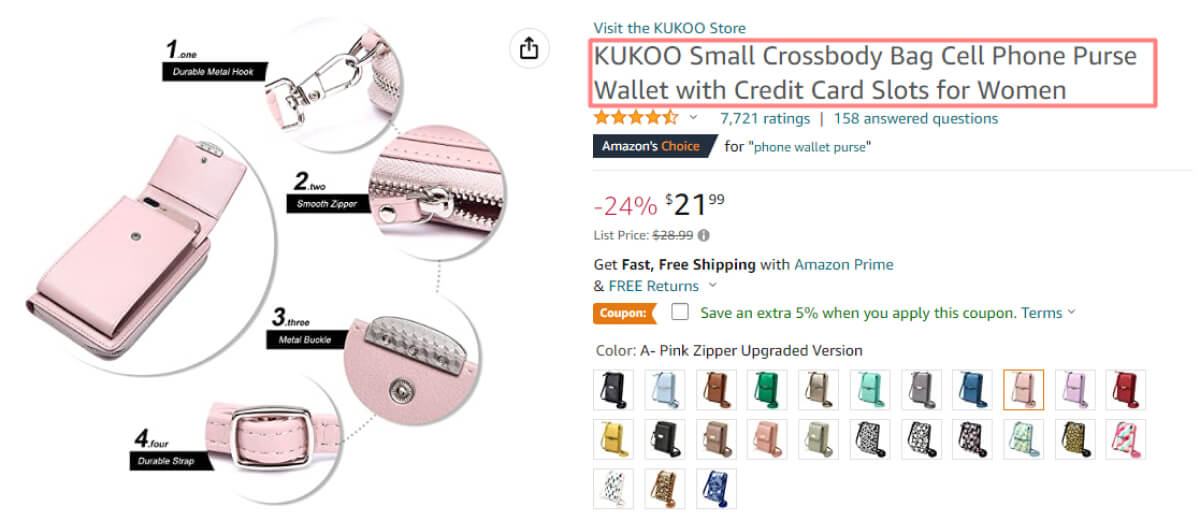
Using buyer persona in your workflow will improve your CTR by 14%, resulting in higher conversion rates.
This leads us to the next step, which will show you how to ensure your product reaches that potential buyer.
2. Grasp Amazon’s SEO Algorithm
The Amazon search engine ranks products based on their relevance to a user's search query — the more relevant a product is, the higher it will rank.
It does this by measuring how well it meets the search query and then uses that information to determine how many times it should appear in the search results.
Search queries consist of a keyword plus any number of additional words.
For example, the term "shoes" could be a search query for the product "shoe" or "shoes".
Here is a more specific example:
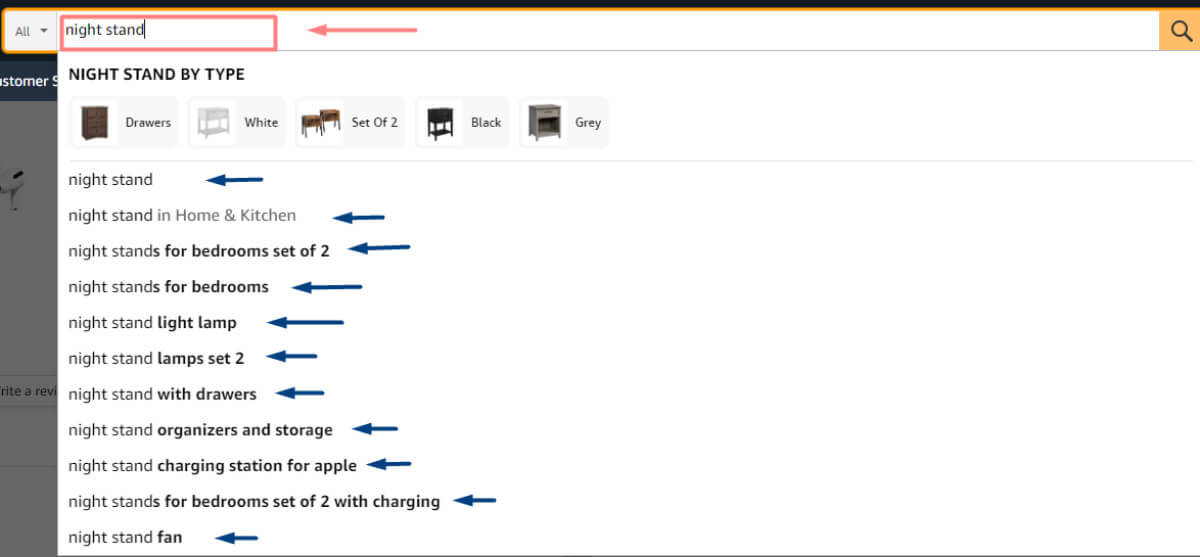
To determine the ranking of the products, Amazon uses several factors:
- Concerning the rest of the search results, how difficult is it to find the product?
- How does it rank among customers?
- What other items have customers in similar price ranges purchased from you?
- Is it in competition with any other products?
- What are other goods in a similar price range currently on the market?
- Is it the most affordable option?
How to optimize your product description SEO strategy?
Amazon's website has multiple pages with various elements on each page.
- The homepage — contains links to products, a brand store, and product descriptions.
- Products page — Optimized for images and videos.
- Search page — More likely to have text-heavy pages. This is because it features a lot of search terms, including brand name, price, and other terms.
To write SEO-friendly product descriptions and gain better search results, you can use keywords to target specific queries when emphasizing your product's features and specifications.
You can try software such as Keywords Everywhere (free) to discover metrics about specific keyword performance and suggestions about trending keywords.
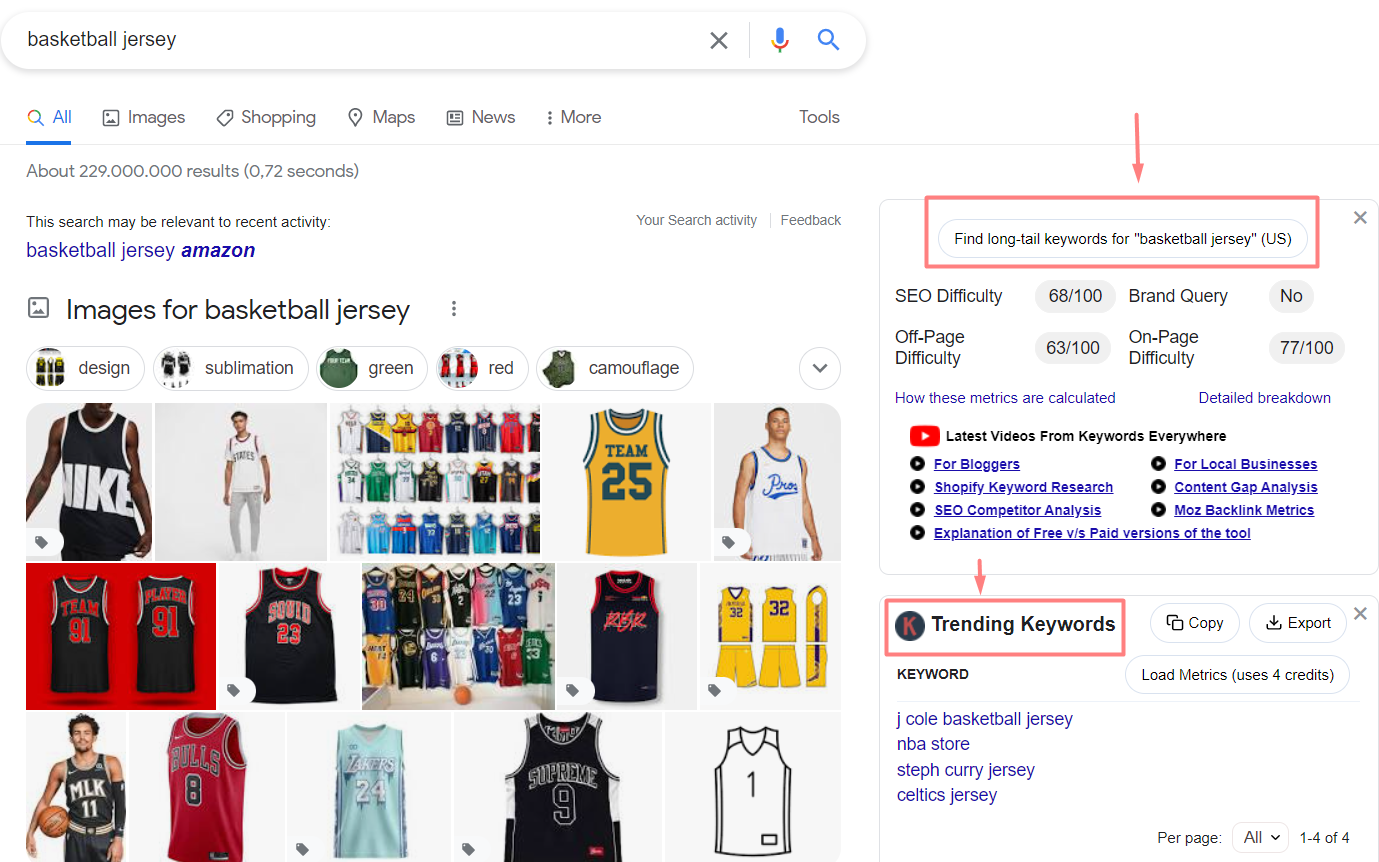
Target keywords that could benefit your customers by including products, brands, services, sizes, colors, and even location when creating product descriptions.
3. Mind Product Description Length
A product description is integral to a product's selling message that helps the seller attract potential buyers.
The description must match the product precisely and be clear on what it is about.
To start, write a detailed product description in just one sentence, adding specific features that the customer needs.
For example, if you want to sell a knife, write "Custom made kitchen knife."
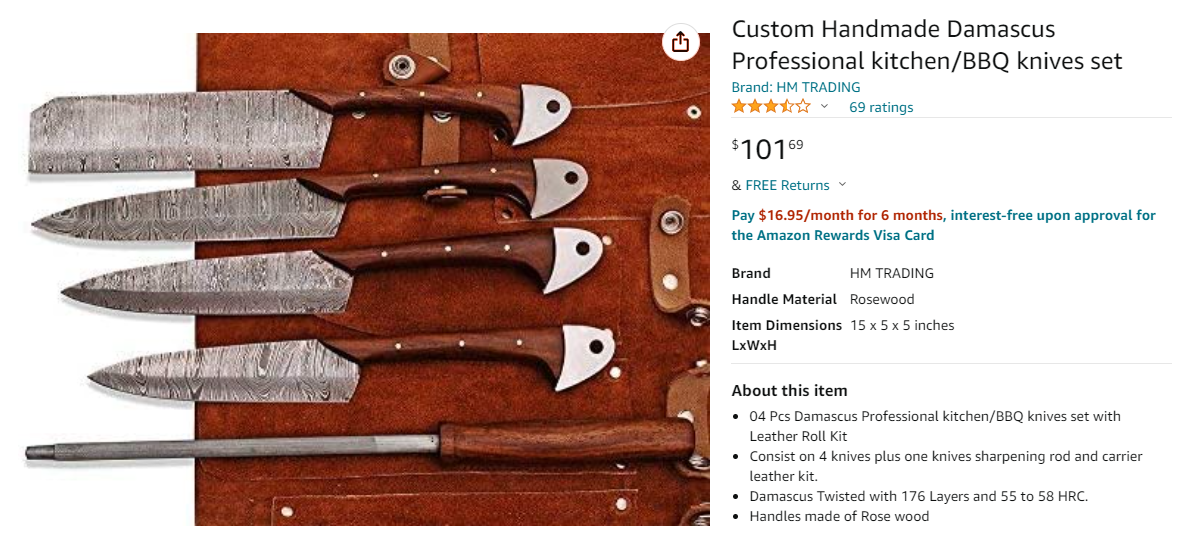
When writing product descriptions, the general guideline is that you should limit yourself to no more than 200 characters, including spaces.
Keeping text length in mind can improve product description performance in general and it can:
- Raise buyer interest in the product
- Help you rank higher in search engines by
- Stand out on the product patch for improved visibility
The superb strategy to create the best effect is to keep the product description as simple as possible.(which TextCortex can help you with 🙂)
4. Use Bullet Points For Long Descriptions
Bullet points allow you to keep your users on the page because they can grasp relevant information quickly.
Bullet points will help you to include all crucial information without being obnoxious.
Remember that your clients are on the verge of making a purchase and the last thing you want to do is scare people away.
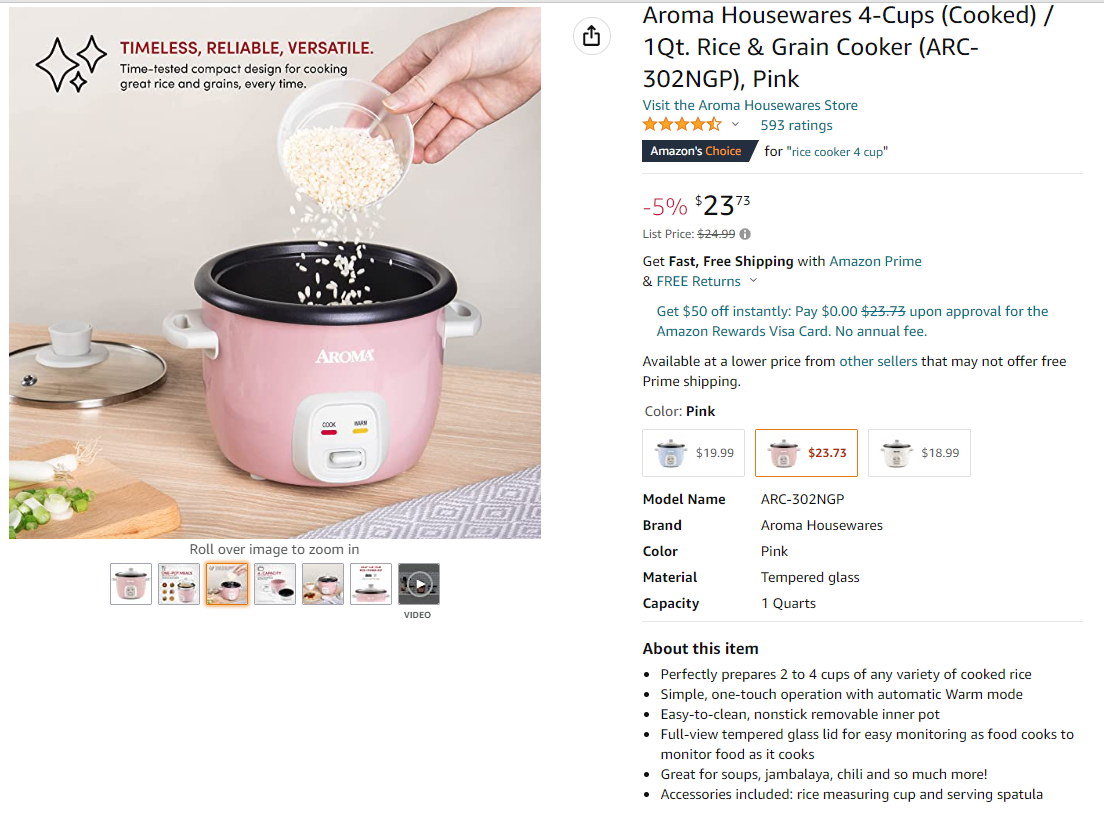
This Rice & Grain Cooker cuts down a potentially boring wall of text into six easily digestible bullet points.
People can quickly obtain the information they require to understand if this product is a solution they are searching for to get to the next step of purchasing.
5. Brag About Product’s Benefits
The buyer's mindset is clear when searching for the perfect solution to his pain point — he only aims for benefits first.
Thus, make sure the reader gets to know what the product is all about before buying it.
Here are things you can include when writing product descriptions:
- Product features — Customers want to know more about your product, its features, and how they benefit the user.
- Customer's experience — By providing details about how it works, they can give your product a better chance of being purchased by other customers.
- Product's capabilities — Show your customers that your product can do what you say it can. This gives them a sense of trust in the way your product can perform.
- Product's specifications — Describe the benefits your product offers. You can use words like "easy to use" and "quick and easy" to give a good impression of how your product works.
- Product's appearance — The best way to describe your product is by using adjectives that match its actual appearance.
- Recent improvements — Share why your customers should be happy with your new version of a feature you have added.
- Product design — You can describe your product's design to create a lasting impression on your customer.
- Product's performance — Tell your customers how well the product performs by giving relevant metrics.
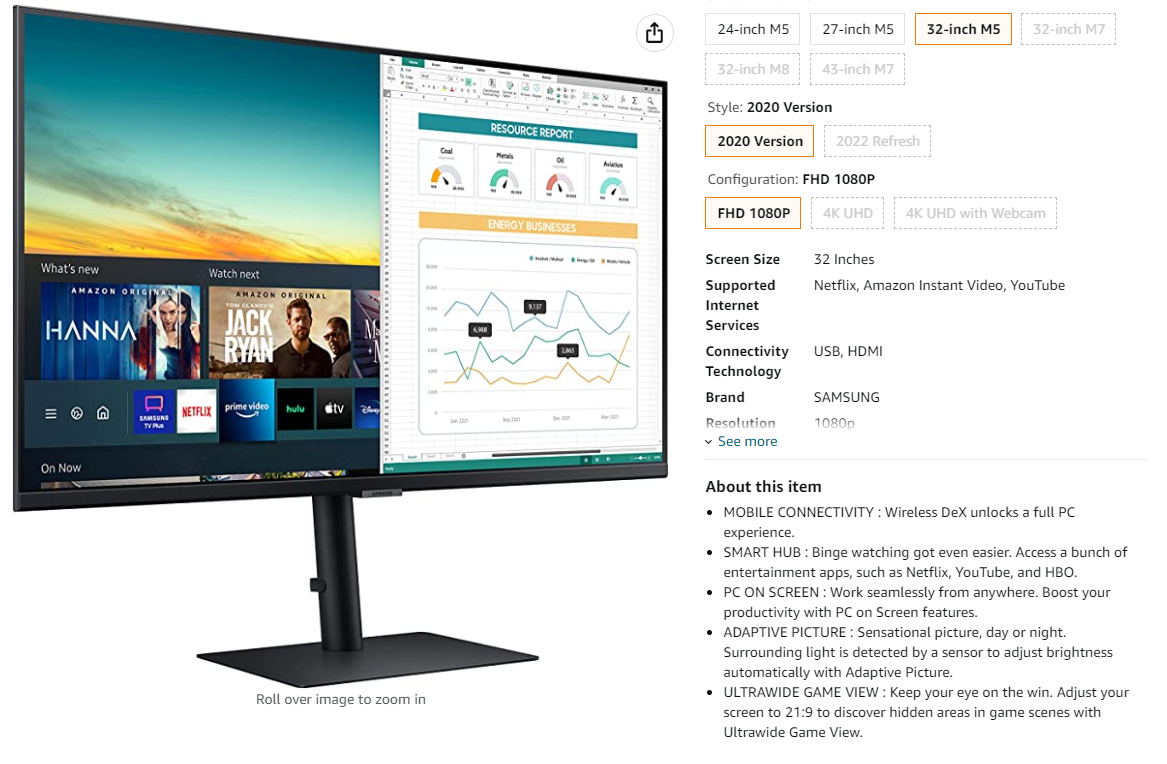
Because benefits are a crucial factor in a buyer's selection, they are the most critical portion of your product description.
If, for example, a buyer is looking for a TV that he can use for gaming, he will review the product description to see if the device offers that capability.
You can see all of the specified features of this smart TV in the example above, which may entice shoppers to consider purchasing it or compare it to another option.
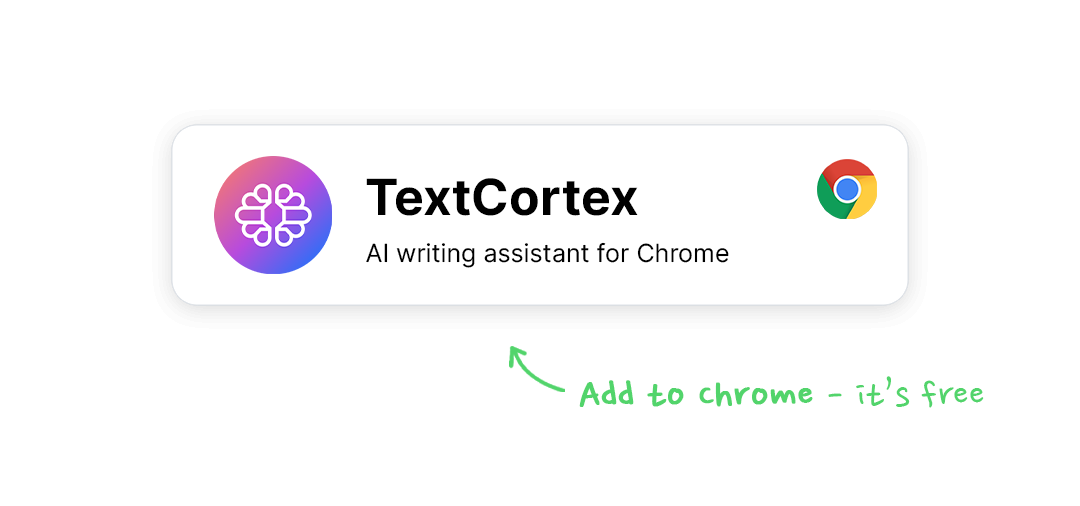
Make it clear to buyers what they will gain from using your product to inspire enthusiasm.
The more enthralled they are by your description, the more inclined they are to purchase something.
6. Include Social Proof
When you go shopping, would you rather buy a product with no reviews than a highly-interested one with numerous recommendations and star ratings?
People are social beings who tend to follow the behaviors of the majority and love to see tangible proof more than anything else.
It's a psychological phenomenon, but the study confirms that online reviews influence 67.7% of purchasing decisions.
Here is a good example of how you can include social proof in your product descriptions:
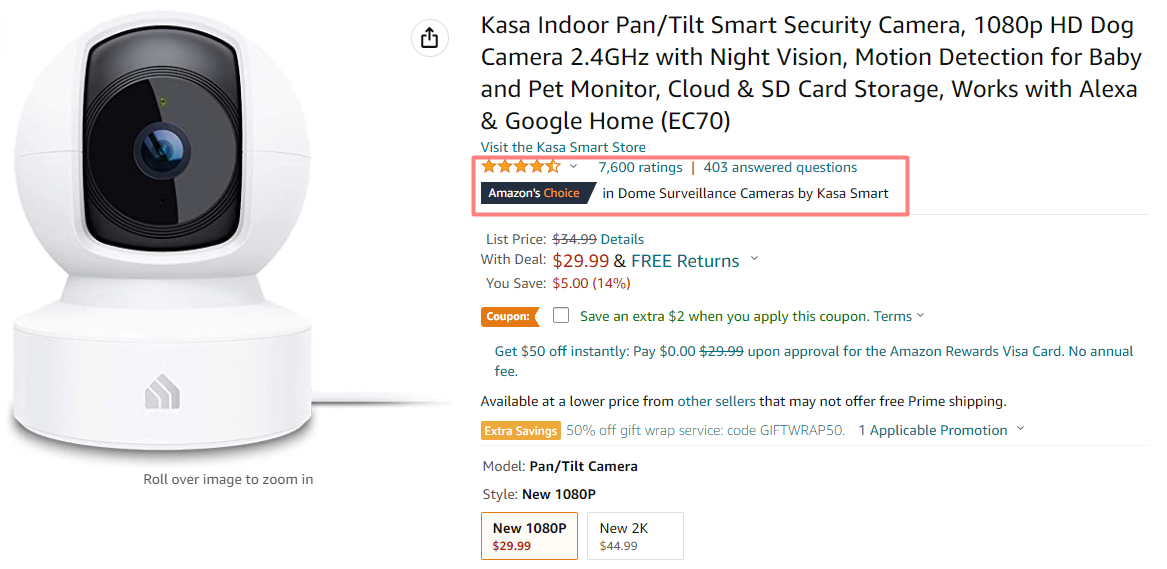
Social proof serves as a road map for your customers, directing them to the most appropriate products.
These techniques encourage clients to complete transactions by establishing and maintaining feelings of trust and commitment.
To Wrap Up
The primary and most common issue that many store owners overlook is the use of generic and boring product descriptions.
To overcome the most common product description problems, one must understand which factors to improve when crafting them.
We hope these tricks can enlighten you on how to write product descriptions for Amazon to boost your performance and increase conversions.
However, this is only the beginning of your eCommerce journey, as the market is rapidly expanding and competition is becoming increasingly fierce.
You must supply high-quality product descriptions with each creation to maintain a competitive advantage and expand your business to new heights.
And believe me when I say that this is not a simple job because it is repetitive and boring, and it demands a significant amount of time.
For that purpose, we created TextCortex.
Let me tell you how it works?
TextCortex is a use-case module-based AI writing assistant that can generate a variety of topics and content formats using machine learning processes.
That includes product descriptions, titles, ad copy, blog posts, autocomplete text, and support emails, among other things.
TextCortex stands out because we train our AI models to generate consistently high-quality output on 3 billion best practice use-cases.
Our complex algorithms guide AI generators to create natural-sounding text that is 98% plagiarism-free and 2% pure creativity.
Unlike GPT-3 models, TextCortex is 10x-100x smaller, allowing AI writers to generate text with different levels of complexity.
Imagine that you can create hundreds of product descriptions with just a simple click.
To start creating your product descriptions, simply sign up, hit the "Product descriptions" feature in the navigation bar and select "Manually."
Moreover, you can use our TextCortex rewriter extension to instantly generate blog articles or cold business emails wherever your pen needs it:
The primary reason for giving it a try is that it is free to sign up, you will get 10 creations per day, which you can enhance by evaluating the tool or recommending it to someone else in Google reviews.
Just imagine this: :
- Saving over 80% of your writing time.
- Producing content at scale.
- Creating plagiarism-free content optimized for SEO.
- Generating long and short-form content within seconds
- Always creating natural-sounding output.
Yap, all that is possible with TextCortex.
Try our Chrome extension today and watch how TextCortex effortlessly improves your writing and product description quality while saving you time and money.

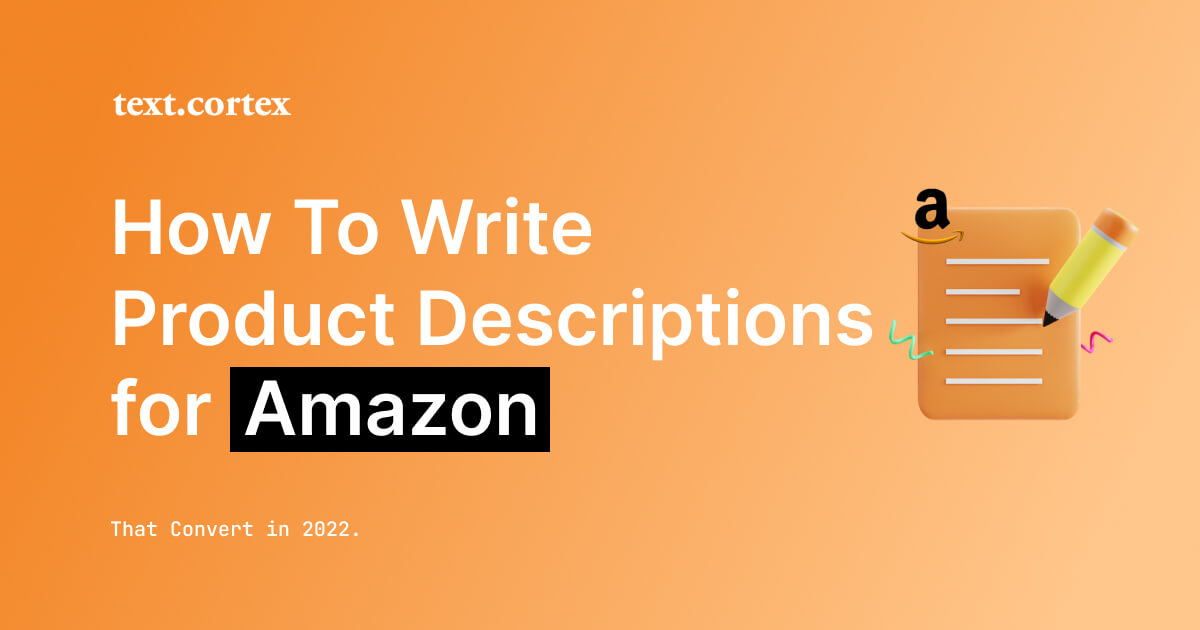
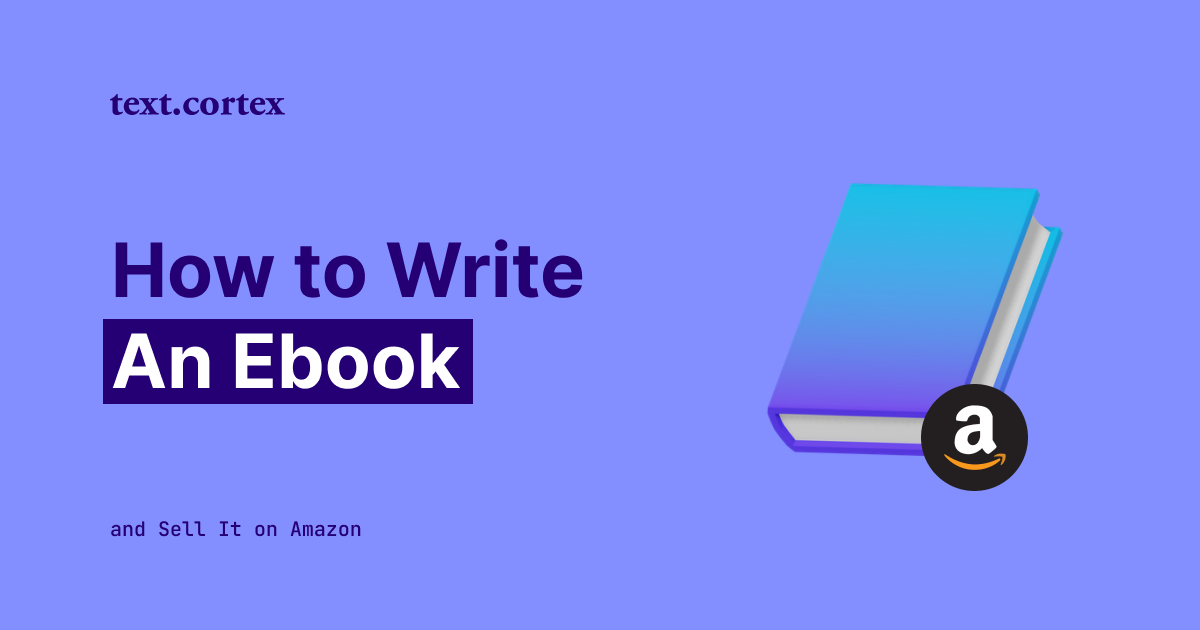

%20(31).png)
